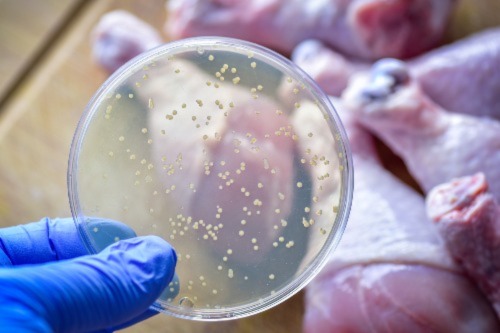Shigella: ask a microbiologist
Posted on April 12, 2023 by Dr Maaike van den Beld
The European Centre for Disease Prevention and Control and the US Centers for Disease Control and Prevention have warned the public that declared cases of drug-resistant Shigella are on the rise. In light of this, we asked Dr Maaike van den Beld, a molecular bacteriologist at the Dutch National Institute for Public Health and the Environment, some questions about Shigella infection and his recent publication in Microbial Genomics which reports on surveillance of Shigella in the Netherlands.
What is Shigella?
Shigella is a bacterium that causes shigellosis, a diarrhoeal disease. This can range from mild diarrhoeal episodes to full-blown dysentery with bloody stools and fever.
What are the symptoms of Shigella infection?
The symptoms usually start with fever, headache, loss of appetite and malaise, followed by watery diarrhoea, sometimes accompanied by vomiting. In mild infections in otherwise healthy persons, the symptoms will usually diminish within a few days or a week. However, for some patients, the disease develops into dysentery, which is characterised by abdominal pains or cramps with bloody and slimy diarrhoea with frequent passage of redcurrant jelly resembling stools.
How does Shigella spread?
Traditionally, Shigella spreads from person to person or through contaminated food or water. The infectious dose of Shigella is very low; ingestion of only 100 bacteria can make a person ill, which is less than with other foodborne bacteria such as Salmonella. Throughout history, many Shigella outbreaks were described, mostly associated with displaced populations that live in less hygienic circumstances because of war or natural disaster. In recent decades, numerous countries also report sexual transmission of Shigella.

iStock/Manjurul
Is Shigella infection easy to treat? How is it treated currently?
With mild to moderate infections in otherwise healthy persons, treatment is usually not necessary and the infection will clear generally within a week. However, for vulnerable persons or if shedding of the bacteria via stools needs to be controlled, for instance with food handlers, antibiotics can be prescribed. Depending on resistance rates that are geographically varying, country guidelines advise physicians which type of antibiotic is most appropriate.
US health officials are warning of a rise in a drug-resistant strain of Shigella. What can be done to reduce the risk of drug-resistant strains of Shigella emerging and spreading?
To reduce the risk of drug-resistant Shigella spreading, the same rules of prevention should be applied as with drug-susceptible Shigella. The basis is to have access to high quality drinking water, hygienic circumstances and sanitation. If this is provided for, Shigella infections can be prevented by frequent handwashing with water and soap, if possible the use of a separate toilet for infected persons, and sexual abstinence while having diarrhoea. People working in food preparation or in healthcare should contact local health authorities.
To reduce the risk of emerging drug-resistant Shigella strains, it is important that treatment is guided by antibiotic profiling of the infecting Shigella bacteria, which can be performed in medical microbiological laboratories. Misuse or overuse of antibiotics is causing the development of drug-resistant bacteria.
How serious is this problem? Should we be worried?
Spreading of drug-resistant bacteria in general, but also Shigella, is a serious public health threat. If bacteria are becoming resistant to antibiotics, it will no longer be possible to treat infections or use antibiotics to prevent infection during surgeries. This is why drug resistance of infective agents is one of the top 10 public health threats as declared by the World Health Organization.
You recently published a paper in the Microbiology Society journal Microbial Genomics about the surveillance of Shigella. Can you tell us a little bit about this research and the findings of this paper?
In the Netherlands, there was limited insight into the characteristics of circulating Shigella strains and their place in the global context. To be able to take control measures to prevent further spread of (mainly multidrug-) resistant strains, it is important to understand which groups are most affected and identify circulating strains. For this purpose, we set up a pilot genomic surveillance system in the Netherlands. Data from the first surveillance year showed that multiple multidrug-resistant Shigella strains are prevalent in the Netherlands. A substantial proportion of identified clusters were related to internationally circulating Shigella. It highlighted the need for a national genomic pathogen surveillance system for Shigella.
What do you think the implications of this research will be?
Findings of our pilot study led to the implementation of a national genomic surveillance system for Shigella. This aids the Netherlands in monitoring and controlling the emergence of multidrug-resistant Shigella in specific subpopulations, and/or identifying clusters of cases.
You can read Dr Maaike van den Beld's article ‘Whole-genome sequencing of Shigella for surveillance purposes shows (inter)national relatedness and multidrug resistance in isolates from men who have sex with men’ in Microbial Genomics.

